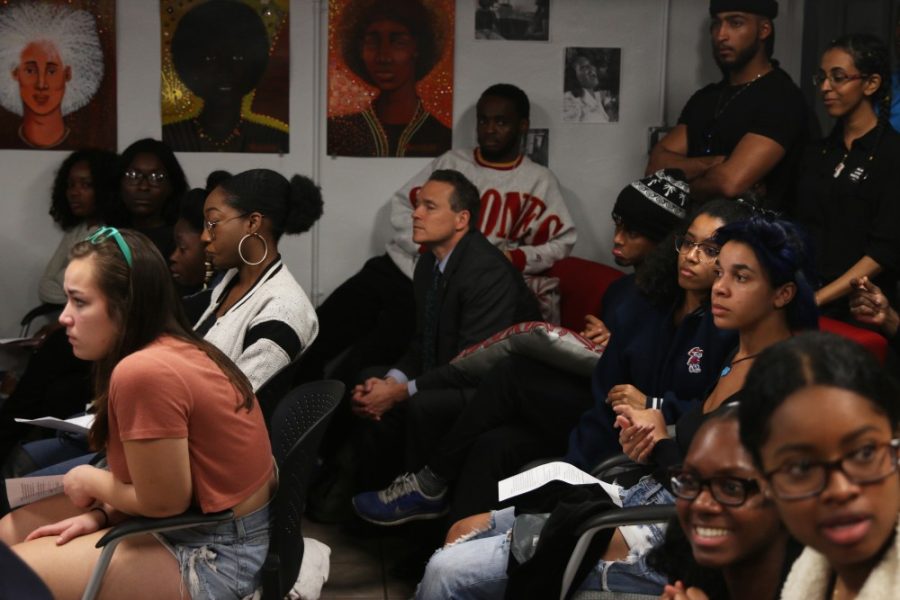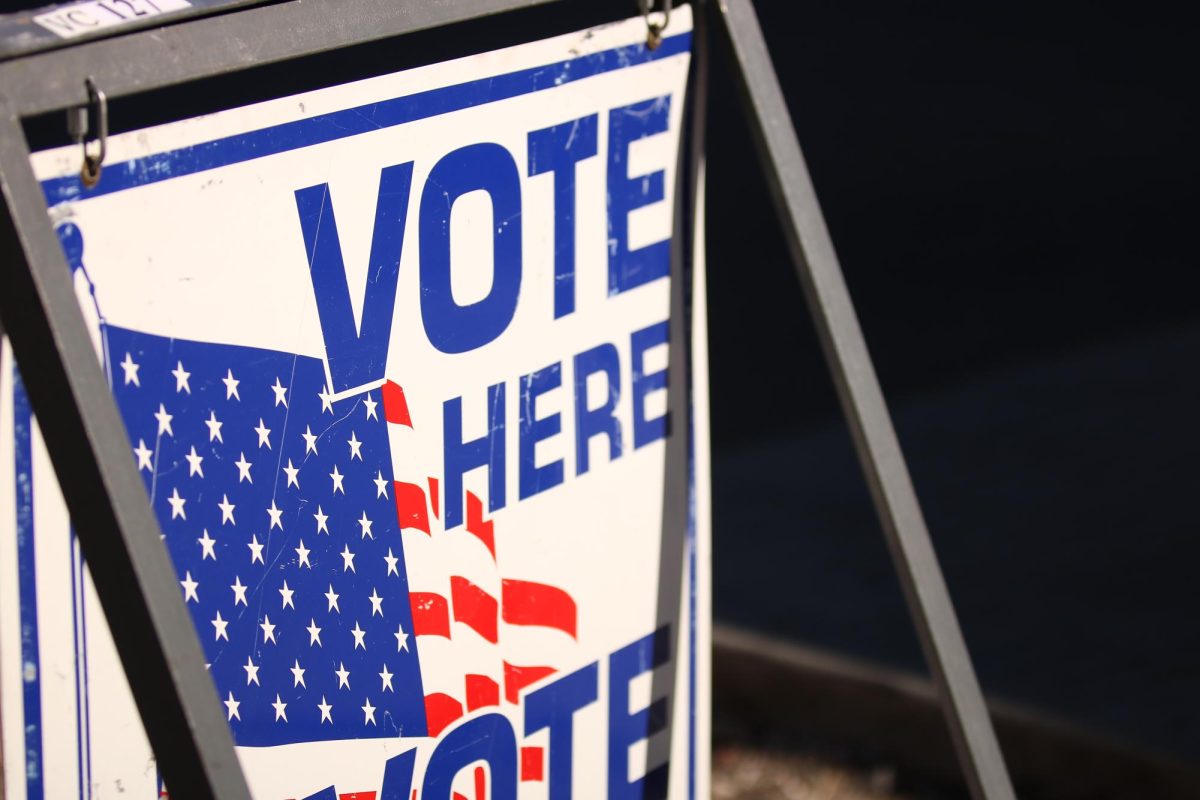Law freshman Kevin Bishop was living his first year in a dorm with a group of like-minded students, and he said he loved it.
“I would recommend it to anybody,” Bishop said. “Especially if you’re in a cultural community.”
However, with construction in Arizona Stadium and what can only be construed as significant miscommunications, living in the BLACK cultural community seemed like more trouble than it was worth.
BLACK, or Building Leaders and Creating Knowledge, is a living, and learning community sponsored by African American Student Affairs. Bishop is a part of the BLACK living and learning community, which, until winter break, resided in Navajo-Pinal Residence Hall.
BLACK moved from Navajo-Pinal to Kaibab-Huachuca Residence Hall one week after classes started this semester due to renovations on the east side of Arizona Stadium, which Navajo-Pinal is carved into.
Potential stadium renovations had been studied for years. According to Peter Dourlein, associate vice president of Planning, Design and Construction at the University of Arizona, the most recent study started in October of 2016 and continued through 2017.
However, the project, primarily funded by the recent addition of the student athletic fee, played a role in inspiring PDC and the Athletics Department to commence work on the stadium.
“So, we started to look more at the east side of the stadium,” Dourlein said. “And the ZonaZoo area and the under space behind the ZonaZoo area for restrooms and concessions.”
The Arizona Board of Regents gave first approval to the plan on Sept. 28, 2017, as a part of the UA’s Capital Improvement Plan for fiscal years 2019-2021. However, according to Dourlein, the decision to move forward with plans for the stadium was made in October of 2017.
The regents ultimately approved the project on Nov. 16, 2017, about one week after UA Housing and Residential Life was made fully aware of the situation.
According to Amanda Kraus, interim director of HRL, she was invited to a meeting with the athletics department, PDC and other parties involved in the project in early November to make them aware of stadium renovations and its impact on students.
After that meeting, Kraus notified Kendal Washington White, assistant vice president for Student Affairs and Dean of Students, who was upset.
“When they told me, I’m upset because I’m thinking we can’t do this,” Washington White said. “First of all, they signed a contract, they paid their money and [to move students] in the middle of an academic year, that’s not OK.”
HRL also had to figure out how to offer students living in the stadium “the least inconvenience,” according to Kraus. Eventually, they offered all students living in Navajo-Pinal a number of options.
The first option was to move anywhere else on campus that had room for the price of living in the stadium.
“Which means that if there was a space in Likins, one of our most expensive [halls] next door, and you got that space, you’re going to pay the stadium rate to live in Likins,” Kraus said.
If students chose to stay, then there were some things HRL could guarantee because they negotiated with PDC and athletics.
“If you want to stay, then what we can promise is that the work won’t start until 10 a.m. and will wrap by 6 p.m.,” Kraus said. “And that, as we are made aware of kind of the scope of the project for each week, we will communicate that.”
However, options got a little more complicated when it came to what the BLACK living learning community decided to do.
K.C. Williams, director of AASA, was made aware of the situation from HRL on the morning of Nov. 28. Williams said she was told a project would be going on and what that would mean for BLACK.
“Of course, I was like well, ‘Let’s move them to Pima,’” said Williams, referring to the closest residence hall to the Martin Luther King Jr. Building, which houses AASA and its programs. “They were like, ‘No, there is not enough room in Pima.’ Kaibab was the only option.”
The students in BLACK heard of the situation that evening. Since BLACK was meeting then anyway, Williams decided to have Daymyen Layne, director of residential education for HRL, inform the students that evening.
“He promised us that [moving of student parking passes] would be taken care of, compensation for having to move and deal with the situation,” Bishop said. “They promised us movers.”
Even though not all the students chose to stay in BLACK, those who chose to move did so on the contingency that everything would be taken care of over winter break.
During finals week, the students packed up their rooms before they left so that everything could be taken care of over break.
However, there was a change of plans. According to Williams, the students received an email informing them their belongings would not be moved for them over winter break, contrary to what they had been told before.
“I know because then my phone starts blowing up, and I’m like, ‘Wait, what’s going on?’” Williams said. “And they’re like, ‘We just got this email, and they’re not going to move our stuff over winter break, and I just packed up all my stuff; my mom took a day off of work.’”
Preparation for stadium renovations were scheduled to begin Jan. 4, according to Dourlein. Three days later, residence halls re-opened for the spring semester.
However, the students of BLACK returned from winter break and experienced more problems leading up to finally being moved in.
For one, students were erroneously charged for living in both Navajo-Pinal and Kaibab-Huachuca. However, to Washington White’s understanding, the error was spotted and fixed within 48 hours.
When Bishop inquired about his parking pass being transferred, he found out Parking and Transportation Services had no record of the students’ situation. When Bishop finally spoke to Layne, he was told the wrong person was notified and Layne could not help him with the situation.
In a statement to the Daily Wildcat, Parking and Transportation Services noted that it worked to get the students’ parking passes resolved as quickly and conveniently as possible.
HRL hired an outside moving company to move the students from Navajo-Pinal to Kaibab-Huachuca.
“We thought that would offer a higher level of service and just kind of make things easier,” Kraus said.
However, the process did not run as smoothly as she anticipated. Bishop was the first to move into Kaibab-Huachuca on Jan. 17, and his experience was less than ideal.
“They were like five minutes late with mine,” Bishop said. “Mind you, I had class at 11, and I was trying to be on time.”
While the movers were moving his stuff, there was an incident with Bishop’s printer.
“The guy who was carrying my printer was also carrying my TV,” Bishop said. “For one, he had the TV chord dangling down the stairs; he dropped my printer down the stairs and tried to pick it up like no one was watching him.”
Bishop claims his printer still is not working the same. While helping other BLACK community students move in, his CatCard didn’t work, and his parking pass was not transferred.
On Jan. 24, Black Student Union hosted a meeting with UA President Dr. Robert Robbins, Washington White, Layne, Dave Heeke from athletics and other university leadership. There, the students had the chance express their experiences with the moving process.
The meeting was also where Heeke told the students his side of the situation.
“I don’t think, truthfully, there was a full understanding of the impact to that end of the stadium,” Heeke said. “That’s not an end of the stadium that we were going to renovate or change in any way because of the living arrangements that were there.”
Heeke also admitted that, as renovation plans were moved further east, the more the student population at Navajo-Paul became a concern.
“Then it became ‘OK, there may be noise, there may be inconvenience there,’” Heeke said. “Now we need to make sure we respect those people who live there and how they have to go about their day.”
After that meeting, according to Washington White, Robbins immediately reached out to everyone involved, hoping to compensate the students for what they went through.
“I immediately said I think it should be at a minimum of $1,250 because that was the halfway point[of the value of Spring semester rent],” Washington White said. “But I would prefer the students get $1,500.”
Robbins agreed, and the students got $1,500 as compensation for their experience. They also received ZonaZoo passes from the athletics department.
However, HRL would have done things differently, according to Kraus.
“We never would have assigned students to a hall where we knew there would be this type of disruption,” Kraus said.
However, it was hard for Kraus to say if she would have closed Navajo-Pinal had she known earlier.
“I think, potentially, we would have diverted students; we would have certainly made that an option,” Kraus said. “We certainly could have communicated.”
As for Bishop, he said he would have never moved into the stadium if he knew this would happen. He wants other students to speak up.
“Definitely, if something happens to you, say something,” Bishop said. “And stand up, because otherwise they’ll keep doing it to you.”
Follow Jordan Williams on Twitter









